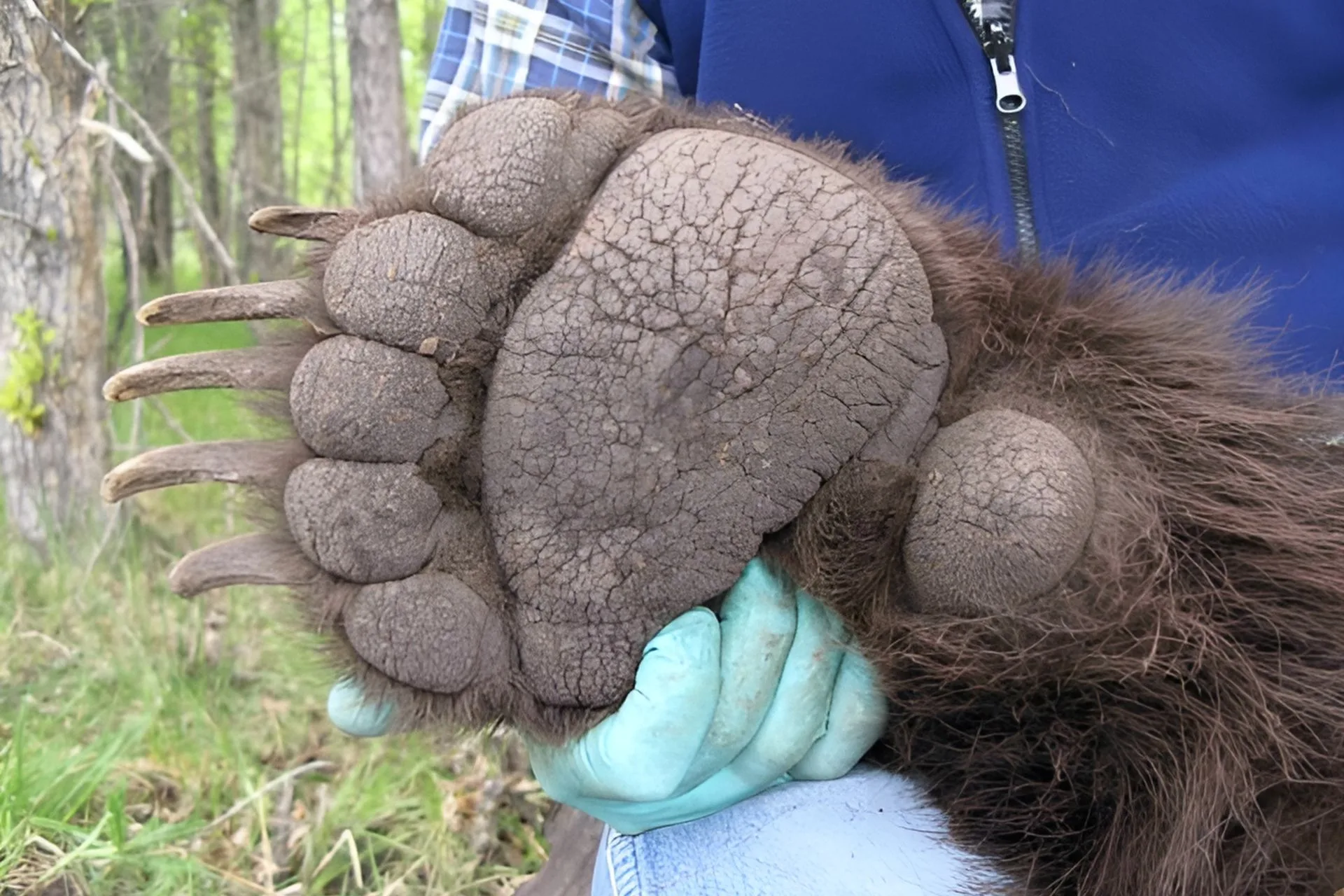Montana is ground zero for most of the Grizzly bears in the United States. Of the 6 designated wilderness areas where Grizz are protected, 4 are in Big Sky Country.
During an archery elk hunt in the Gravellies, I was bugling in a bull elk. They were coming up hill from my right and crossed a trail in front of me. As several cows passed, 2 spike bulls followed. I heard an additional critter coming the same path. At 20 yards, a male Grizz waddled into the trail and stopped. He was huge! The bear saw me and stood up on his back legs. I guessed he was well over 600 lbs. and stood 8-10 feet tall.
I pulled my SW 357 revolver, stood atop a log, and held my bow out to make me look as big as possible. A wheel gun only carries 6 rounds but will always go off when the trigger is pulled. Semi auto handguns easily jam. Bear spray requires hitting a pie plate sized target, the bear’s face, while the 800 lb. critter is charging. Not an easy request.
I talked to the bear in a calm voice and did not run. He finally dropped to the ground and continued following the elk. Had the bear been a sow and had cubs, things could have been different. Sows tend to be more aggressive than the boars, especially when protecting cubs. Getting between sows and her cubs is a worst-case scenario. Not planning for a bear encounter is foolish today.
It is not uncommon for me to see several bears a day when archery hunting. A few years ago, I counted 8 Grizz on a fresh killed cow near Black Butte, in the Gravelly Mountains. 20 years ago, I almost never encountered a bear. Now bears, cats, and wolves are more abundant and dangerous than during my lifetime of hunting.
The Greater Yellowstone Ecosystem is home to over 727 Grizz. My guess is that this is a conservative number. When the National Park Service created the bear protection zone in 1993, they were hoping to reach a population of half that size before allowing any hunting. Today, the bears are still protected, and the only bears being shot are attacking hunters or campers, targeting livestock, getting hit by a vehicle, or other random fatal encounters. Bears that have been trapped and moved are often released in remote areas where hunters and backpackers can bump into them.
Prior to 1800 it was estimated that there were more than 50,000 Grizz in 18 states. As pioneers moved into the area, eradication of this dangerous critter was encouraged. Trapping, poisoning, and shooting were tools for collecting bounties on the bears. By the 1930’s less than 2% of the range still had any rarely seen bears. Today a total of around 2,000 grizzly bears live in the 6 protected areas found in Wyoming, Montanna, Washinton, and Idaho. Male Grizz routinely migrate between these Protected areas. Some also travel toward Colorado and eastern Montana.
Other folks around the states are happy to see the bears return but they do not have to live with these apex predators. Livestock, pets, outdoor recreationists are encountering Grizz more often. These encounters end badly for people and the bears.
The biggest Grizzly Bears can easily stand over 10 feet tall and weigh over 1,000 pounds. They can live up to 25 years. Females often give birth to twins but have been known to have up to 6 cubs. The cub’s primary predator are male grizzly bears.

Several massive bears are known in Yellowstone Park. Bear # 791 is tagged and weighs well over 800 lbs. ‘Big Joe”, another bear was killed in 2018 after attacking livestock. Bear 212 was also targeting cattle when removed from the herd. It was well over 800 lbs. These large bears are now on display in local museums.
Bears feast after coming out of hibernation. With normal food, they can easily gain 3 lbs./day. As omnivores, they eat berries seeds and grass but prefer fish and fresh meat from elk, deer, or whatever they can find.
Grizz earned the name Ursa Horribilis!
Montana Grant




